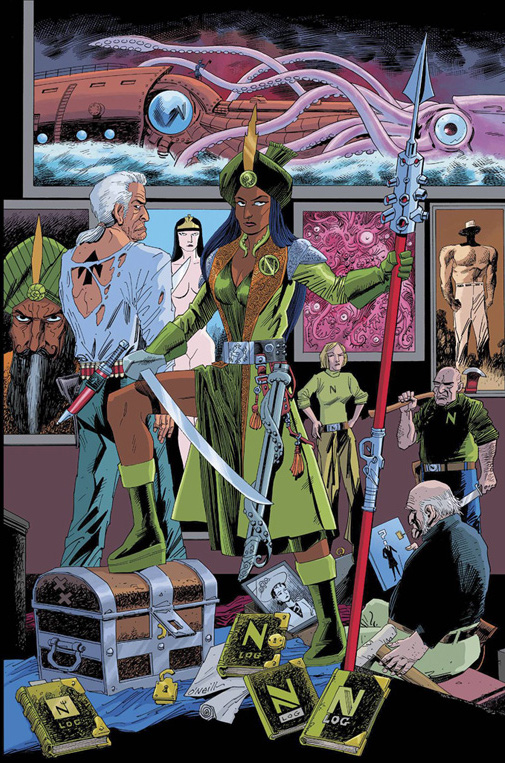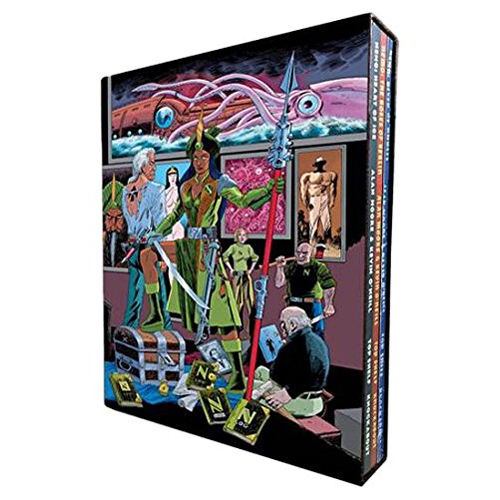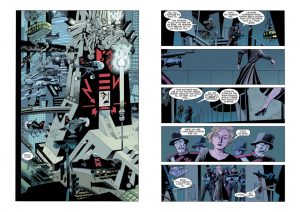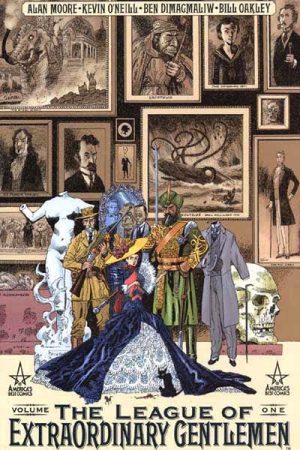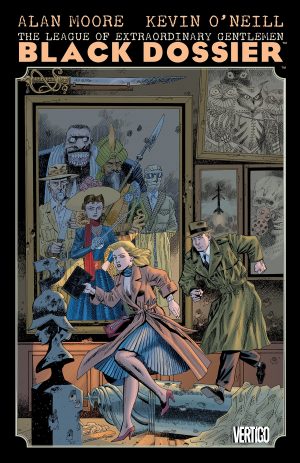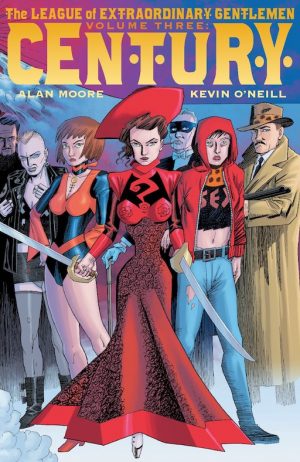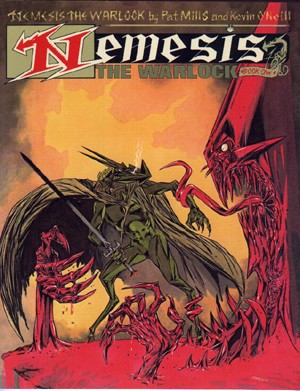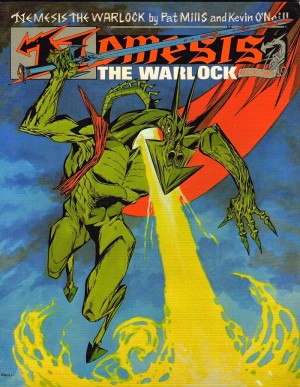Review by Graham Johnstone
By the publication of the Nemo spinoff, most readers knew the League of Extraordinary Gentlemen premise: the ultimate crossover, where all fictions can interact in a shared universe.
Alan Moore develops his borrowed characters ingeniously within their fictional worlds, yet in real time. This means that Captain Nemo, older than his colleagues in the initial 1898 stories, is elderly in Century 1910. Prodigal daughter Janni Dakkar shuns the Nemo role, quitting his island haven for a life in London. However, traumatic events there propel her back to her father’s legacy.
The Nemo Trilogy, mirroring third League volume Century, comprises three novellas set decades apart, this time spanning a mere half-century. Nemo follows Janni’s piratical adventures, leading shipmates old (Mr Ishmael, Broad Arrow Jack) and new, to fresh destinations, visiting Antarctica in the 1920s, Germany in the 1940s, and South America in the 1970s.
Nemo: Heart of Ice, rejoins Janni fifteen years after Century 1910 and is named for the enduring effect on her psyche, as much as the Antarctic destination. Janni’s joyless piracy of immortal enchantress Ayesha’s treasures results in the seige of her pirate haven, and pursuit through a fictionally over-populated Antartica. On paper, fulfilling the League’s original (if tongue-in-cheek) brief of ‘rousing adventures’, this is no easy page-turner. It intercuts between scenes of little known characters in parkas, and in a time-glitch. Readers’ page-turnings may be back and forth, to track characters, and match the time-slipping dialogue, to events only seen later. Ultimately though, the stakes of the expedition, and parallels with a pivotal journey for her father, pay off in character stories for both Captain Nemos.
By 1941, Janni’s daughter Hira has married the son of air-pirate Robur, so uniting Jules Verne’s piratical dynasties of sea and air. Nemo: Roses of Berlin, sees Janni’s piracy of German boats interrupted by news that Hira and Robur are prisoners in the German capital, finally providing a mission with meaning. This Germany is run by Herr Hynkel (Chaplin’s Great Dictator) and engineered by cinema’s prototye mad scientist, Rotwang from Metropolis. This science-fictional siege scenario should have a wider narrative and visual appeal than the earlier Antarctic expedition.
Nemo: River of Ghosts, is Janni’s last voyage. The ailing Captain leads her reluctant crew, and phantoms of lost loved ones, up the Amazon chasing sightings of Ayesha. This quest story, reverses the first instalment’s pursuit story, but similarly acts as travelogue to this abundantly inter-textual world, while gathering disparate strands towards a spectacular climax. Moore creates a compelling composite, not just of a science-fictional South America, but of 1975. He combines the period’s ‘anything goes’ attitude, with spectres of the military past, and social and technological futures.
Moore ensures the small stories are as strong as the large ones, developing over the half-century a diverse family tree of Nemos, Ishmaels, Roburs, and Mabuses. Along the way are numerous moments of heroism, drama, tenderness, and humour. All of which is exemplified in a memorable final scene with little Jack Nemo, setting up his return in final League volume The Tempest.
Kevin O’Neill can visualise anything Moore can write. The Berlin scenes (pictured), channel Moore’s re-appropriations of Expressionist cinema, notably Metropolis, which also inspired films like Brazil and Blade Runner. O’Neill is equally convincing on quiet character moments. He has refined his style over decades, simplifying his characters and compositions (pictured, right), and restraining his previously obsessive rendering. Ben Dimagaliw’s colouring, sometimes intrusive, now perfectly complements O’Neill’s art. These pages are stunning, and as good as anything in the medium.
The first Nemo Trilogy edition is a slip-cased set of the three original hardbacks.
